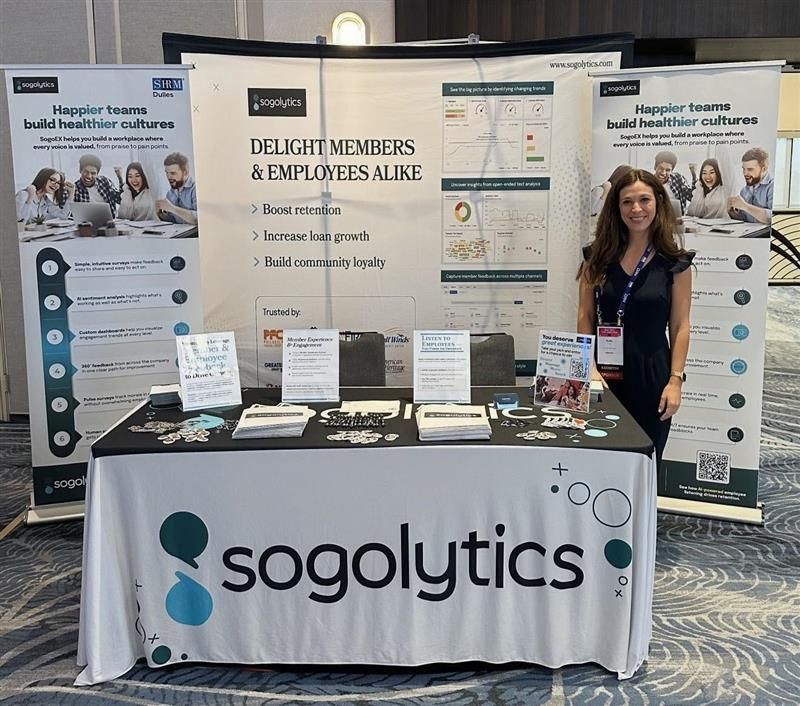Our new WFH scene has brought plenty of challenges, but one of the best opportunities we’re seeing is the focus on employee pulse surveys.
If it’s new to you — and even if it’s not — an employee pulse survey is a very short questionnaire, best administered as part of a series delivered at predictable intervals over a period of time.
Because WFH is new to so many — and even if it’s not — an employee pulse survey is a great way to check in with your team to better understand what’s going on and how you can help.

But why?
To be clear: Don’t just send a bunch of surveys because I said so.
Sending just-because surveys is the worst. Don’t do that. Now — and always — is a terrible time to bombard employees with additional requests that have no bearing on their realities. If you’re going to do it, do it right.
Ask yourself these questions:
- Do I care about my employees?
- Am I going to do anything with the results?
If that turned out to be a much shorter list than you expected, that’s kind of the point. While a pulse survey is great, it’s also short and to the point. I could have made a longer list — Top Ten Questions To Ask Yourself Before You Even Think About Running Employee Pulse Surveys — but let’s be real. If you genuinely care about your employees, you probably want to help improve their experience. If you don’t, well, yikes.
Why now?
Keeping with the to-the-point deal we have here, a few key goals drive the power of employee pulse surveys during the pandemic panic and quarantine scene. Start with these:
-
Understand
To figure out how to improve employee experience, you need to know how it’s going right now. Whether it’s satisfaction, engagement, or some other metric, you can’t make measurable improvements without taking measure of the situation. Plus, as time passes and situations evolve, tracking on an ongoing basis allows you to better understand the impact of each change and how you might adjust.
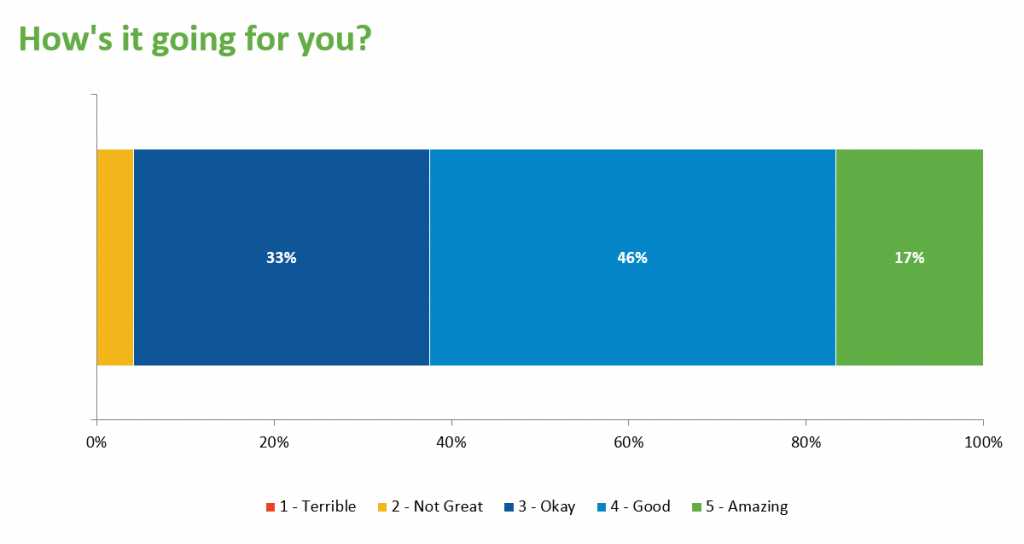
-
Inform
Beyond the physical risks, one of the worst parts of a crisis can be feeling like you have no idea what’s going on. If you have no information, you have no control. While you can’t predict the future — accurately, anyway — you can keep your team up to date on what’s happened recently, what’s happening now, and what plans are about to happen. Nobody expects you to have all the answers, but nobody deserves to be kept in the dark. Even if your audience may already know some of what you’re sharing, it’s better to be open than to leave them guessing. When I was teaching high school students, they always seemed to believe that I had some kind of insider information about whether the next day would be a snow day — or even if it would snow in the first place. Sorry, friends — sometimes we’re all in the same boat.
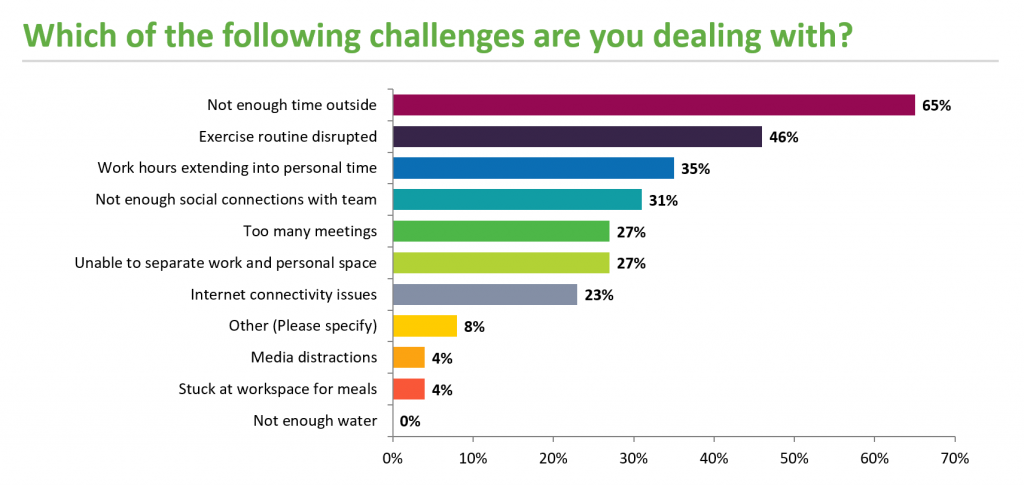
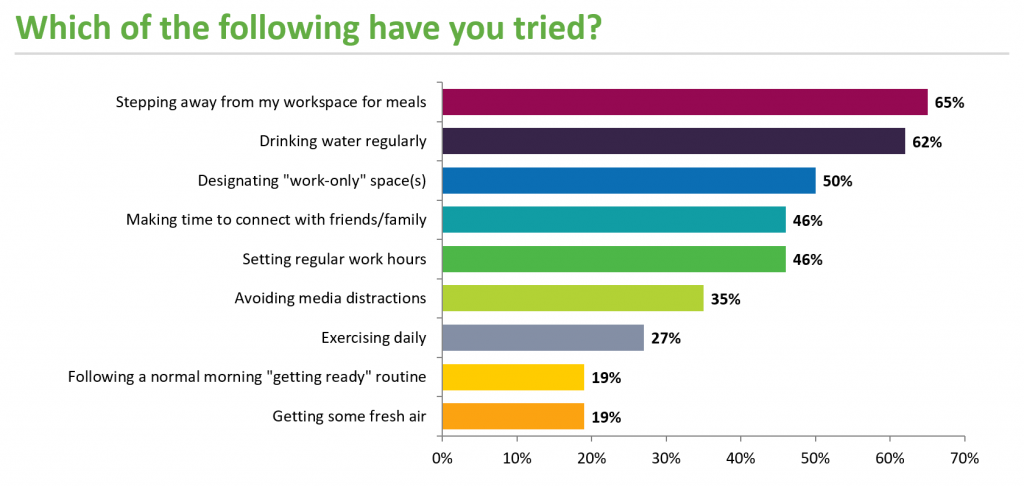
-
Engage
If you’re thinking back to all of the purposes of writing you studied in school, “entertain” might come to mind. Can we entertain our teams with pulse surveys? Sure, but that might not be the real goal here. With employees spread farther apart than usual, supporting your company culture can be a challenge. Sure, technology brings us together, but that’s not always the same as feeling connected. Whether it’s asking about top WFH playlist suggestions or checking in about struggles and successes in the healthy habits category, employee pulse questions can — and should — generate interest and conversation. Imagine if someone just came by and took your temperature once a week without even making small talk. Not cool.

WFH Pulse Check
A few weeks ago, we started offering our users the WFH pulse surveys we’re using internally, along with new templates designed for the current situation. Since then, our list of free timely templates has continued to expand, and the most commonly requested templates are definitely the WFH employee pulse surveys.
Want any or all of these copied into your account? Just ask! Keep in mind: While these are working well for us, your conversations absolutely need to be customized for your audience and situation. As you click the links below, think of these templates as points for departure — not final destinations.
- The Name Game: WFH? Remote work? Start the conversation by agreeing on the vocabulary.
- Healthy Habits: What issues are you facing, and what solutions are you trying?
- Sound Off: What are you listening to these days?
- Productivity Check: How are your personal and professional productivity levels different than normal?
- The Communication Situation: Are you getting the information you need — and are you giving the information others need?
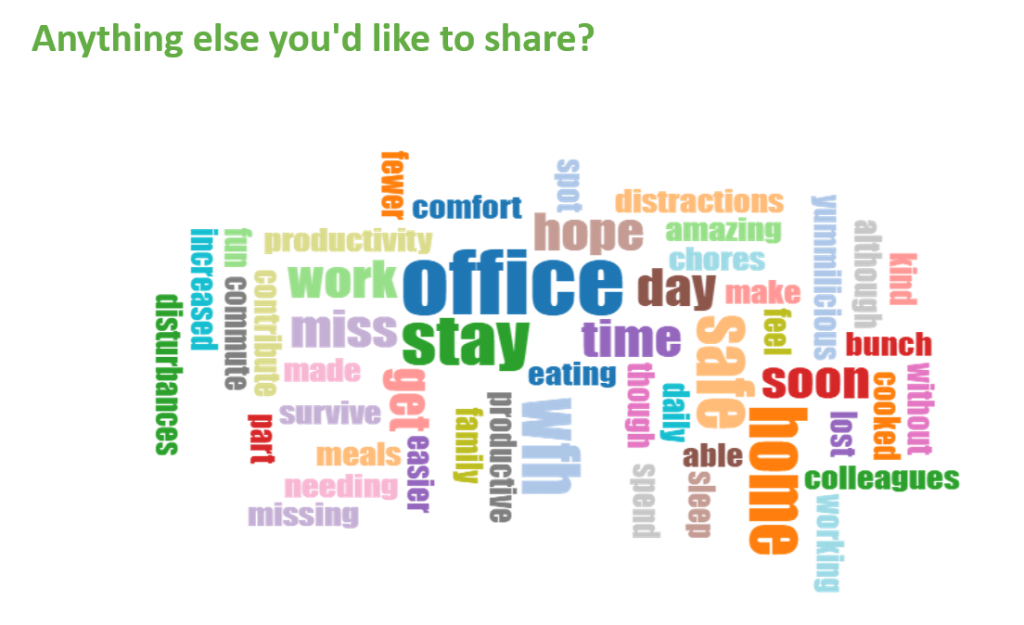
Sharing is Caring
Make plans to share your results. Whether it’s in an all-hands meeting or an internal newsletter, a Slack channel or a blog post, be sure to follow up. Nothing stops an ongoing conversation like walking away in the middle. Keep in mind: This doesn’t mean charts and graphs. Maybe all those music recommendations go onto a company-wide playlist, and perhaps the top tips for healthy habits become a handy reminder graphic. You decide.
Whatever you do, keep the conversation going — and not in a desperate somebody-please-talk-to-me kind of way, but more of a let’s-look-out-for-each-other kind of way. And yes, let’s look out for each other. 🙂
Ready to start the conversation with your team? Our team can help.



